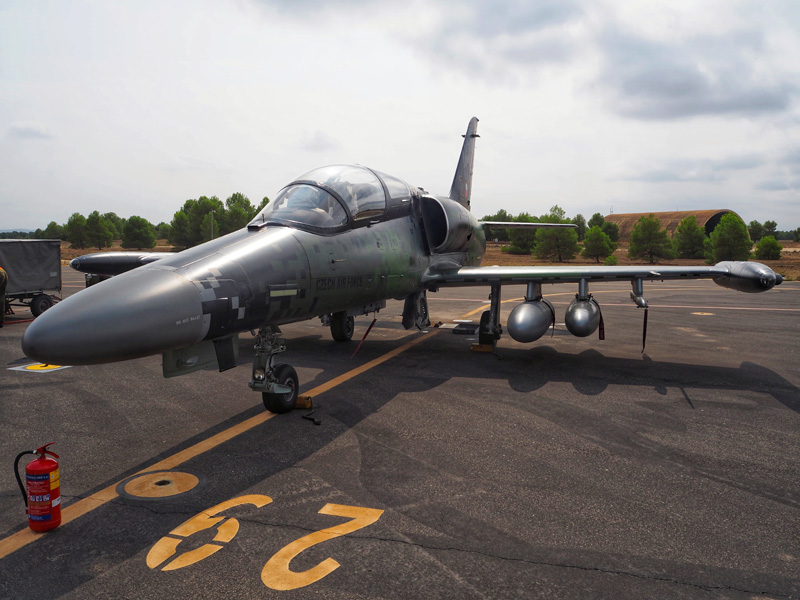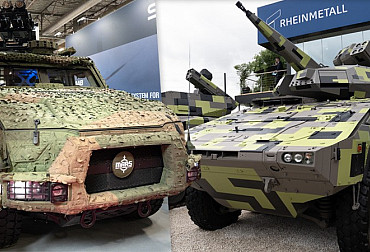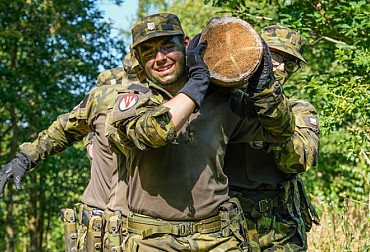The future of subsonic aviation
In the context of the debate on the needs of the Czech supersonic air force, the question of the future of subsonic aircraft in the armament of the Czech Air Force also arises. What is the future of the L-159 ALCA subsonic fighters in the Czech Air Force and how to deal with them in the next few years in view of the development of helicopter and supersonic aviation?
 Foto: L-159 ALCA | Ministerstvo obrany ČR
Foto: L-159 ALCA | Ministerstvo obrany ČR
The strategic documents deal with the current and future role of subsonic aviation in general. Concept of Build-up of the Czech Army 2030 states on page 25 that under Milestone 2025, "Subsonic aviation will complement supersonic aviation capabilities" and "Subsonic aviation will complement supersonic aviation capabilities by providing National Reinforcement System (NaPoSy) to the Czech Air Defense Forces and providing direct air support to the Land Forces." Then, under Milestone 2030, on page 29, we find the following: "The Subsonic Air Force will be modernized and utilized depending on the overall capabilities of the Supersonic Air Force."
The 2035 Long-Term Defense Outlook on page 21 envisages the use of subsonic aviation in 2035 and states, "As supersonic aviation capabilities develop, the use of subsonic aviation will be focused on the effective use of its capabilities to complement supersonic aviation missions."
Thus, it is evident that the Army envisages the use of subsonic aviation. At this point, however, it should be noted that both of the above-mentioned strategic documents were prepared at a time when the Czech Republic enjoyed a very good economic situation, which was also the basis for optimism about increasing defence spending up to the 'magic' 2 % of GDP. In times of economic cuts, however, the question is which modernisation projects the Czech Armed Forces will prioritise and which, on the contrary, will be suspended or cancelled altogether. In this light, a debate on the future of the Czech subsonic air force is proposed.
Subsonic aviation, and especially its combat part, is very popular in the Czech Republic, as it is of domestic design and production. Despite its fate, the L-159 ALCA has been quite successful abroad. It is in the arsenal of the Iraqi Air Force and in the United States it often acts as an aggressor in training.
The subsonic fighters are intended to perform close fire support missions for ground forces, according to the 2030 CSAC. On the one hand, they have been armed with precision weapons, significantly upgraded on-board software, cockpits, and the integration of new multifunctional colour displays or night vision devices. On the other hand, however, there has still been no integration of targeting containers, air-to-air missiles and associated helmet sights or radar upgrades. The L-159 is thus "halfway there".
In view of the above, the future of these aircraft should therefore be considered now. According to the latest available information, the manufacturer of the aircraft, AERO Vodochody AEROSPACE a.s., has already informed the Ministry of Defence of the Czech Republic about plans for possible modernisation of the aircraft.
The second, not much mentioned, possibility could be to change the designation of the subsonic fighters of the Czech Armed Forces from a combat role to a training role. Below the author of the article presents the main reasons why it would be advisable to consider this option.
The first and probably the most important reason is the lack of funding in the coming years. It is not certain whether the Czech Ministry of Defence will manage a sufficient budget to be able to carry out all the intended projects.
The second reason, related to the first reason mentioned above, is the development of supersonic aviation. In general, the Czech Air Force wants to increase the number of supersonic aircraft to at least 24 so that the Czech supersonic air force can perform a wider range of tasks than it has done so far. The question is whether the Czech Armed Forces will really be able to afford to operate 24 supersonic aircraft, plus a subsonic combat air force, in light of the need to develop other parts of the Army? Any increase in the number of supersonic aircraft will require, among other things, a larger number of pilots. These are recruited from the ranks of subsonic fighter pilots. Thus, given the difficulty of training pilots, there may be a shift of these pilots to supersonic machines and a consequent shortage of pilots for subsonic machines.
In the introduction of the article, the author mentioned the capabilities of subsonic fighters, which are not significant in the case of the Czech ones. The question is whether to continue with their operation at all or to look for another, more effective and logical solution. In general terms, this would be a division of the subsonic fighter capabilities between the supersonic and helicopter air forces.
Firstly, the Concept 2030 shows that the Czech Army intends to significantly increase the capabilities of the supersonic air force in the coming years through its modernisation and the acquisition of GPS-guided munitions. This may include the heaviest types, which the L-159 ALCA cannot carry anyway. If the Czech Army decides to continue using JAS-39 Gripen aircraft, it can take advantage of the possibility of integrating a wide range of armament, which is one of the main advantages of this solution.
Secondly, the helicopter air force will undergo significant modernisation in the coming years thanks to the purchase of new American AH-1Z Viper attack helicopters and UH-1Y Venom multirole helicopters, both of which have the capability of anti-surface strikes using both guided missiles and unguided rockets. In addition, the Viper attack helicopters can use multiple types of guided missiles. In the future, then, an increase in the number of attack helicopters is not out of the question, which would also facilitate the retirement of subsonic attack helicopters from the combat role.
Thus, given the fact that in the future, the Army will have a sufficient number of platforms to carry similar subsonic weapons, and given the potential shortage of funds and pilots, the consideration of removing the ground support role from the subsonic air force and transferring this role to the supersonic and helicopter air forces is misplaced.





















